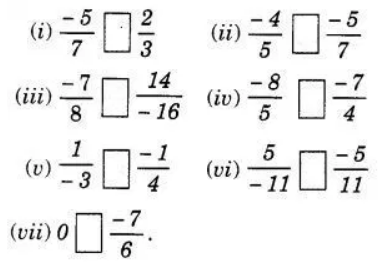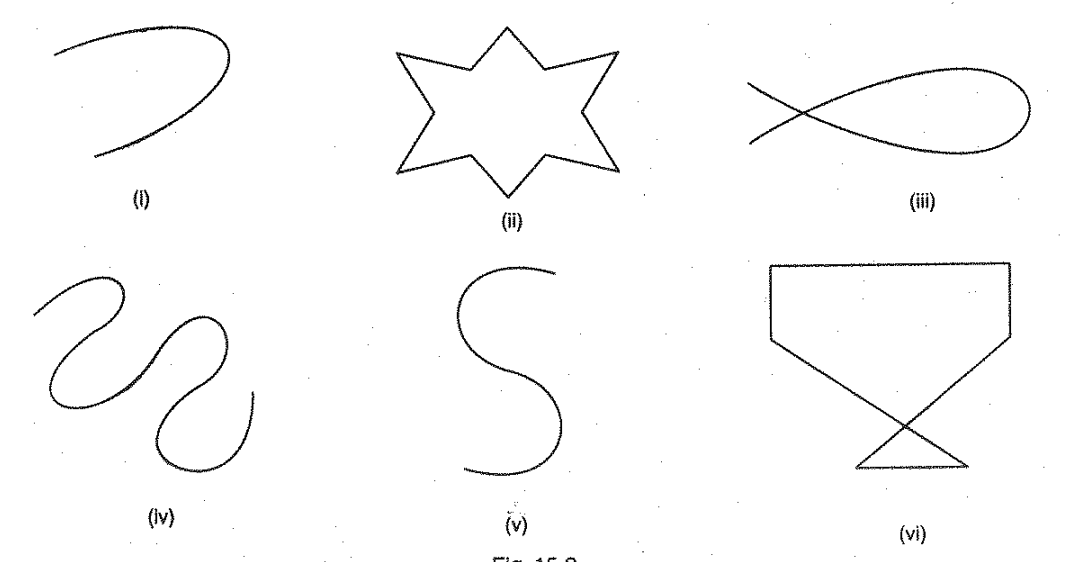Draw rough diagrams to illustrate the following: (i) Open curve (ii) Closed curve
Step-by-Step Text Solution:
Step 1: Understanding Open Curves
- An open curve is a type of curve that does not intersect itself. This means that if you were to draw it, the line would not connect back to itself at any point.
Step 2: Drawing an Open Curve
- To illustrate an open curve, you can draw a simple wavy line that starts at one point and ends at another without looping back. For example, you can draw a line that goes up and down but does not connect back to the starting point.
Example of Open Curve:
///
Step 3: Understanding Closed Curves
- A closed curve is a curve that intersects itself at least at one point, effectively forming a complete loop. This means that the starting point and the ending point of the curve are the same.
Step 4: Drawing a Closed Curve
- To illustrate a closed curve, you can draw a circle or any shape that loops back to its starting point. For example, you can draw a circle or an oval shape.
Example of Closed Curve:
−−−−−∣∣ −−−−−
- An open curve is a type of curve that does not intersect itself. This means that if you were to draw it, the line would not connect back to itself at any point.
- To illustrate an open curve, you can draw a simple wavy line that starts at one point and ends at another without looping back. For example, you can draw a line that goes up and down but does not connect back to the starting point.
///
- A closed curve is a curve that intersects itself at least at one point, effectively forming a complete loop. This means that the starting point and the ending point of the curve are the same.
- To illustrate a closed curve, you can draw a circle or any shape that loops back to its starting point. For example, you can draw a circle or an oval shape.
−−−−−∣∣ −−−−−
Topper's Solved these Questions
Similar Questions
In a parallelogram the sum of any two adjacent angles is 1800.
View SolutionWhat is the least number of planes that can enclose a solid? What is the name of the solid?
View SolutionThe mean and standard deviation of marks obtained by 50 students of a class in three subject, Mathematics, Physics and Chemistry are given below :
Which of the three subjects shows the highest variability in marks and which shows the lowest?
View SolutionA box contains 3 blue, 2 white, and 4 red marbles. If a marble is drawn at random from the box, what is the probability that it will be(i) white? (ii) blue? (iii) red?
View SolutionWhen a die is thrown, list the outcomes of an event of getting
(i) (a) a prime number (b) not a prime number.
(ii) (a) a number greater than 5 (b) a number not greater than 5.
View SolutionFill in the boxes with the correct symbol out of >, <, and =

View SolutionIf 2^33 is divided by 17 , then the remainder is (1) 15 (2) 2 (3) 4 (4) 9
View SolutionWhich one of the following equations parametrically represents equation to a parametric profile ? (A) x=3cost ; y=4sint (B) x^2-2=-2cost ; y=4cos(t^2/2) (C) sqrt(x)=tant ; sqrt(y)=sect (D) x=sqrt(1-sint) ; y=sin(t/2)+cos(t/2)
View SolutionThe measure of the angle between the internal and external bisectors of an angle is: (A) 60° (B) 70° (C) 80° (D) 90°
View SolutionIf the difference between mean and m0de is 63, the difference between mean and median is 189 (b) 21 (c) 31.5 (d) 48.5
View SolutionClassify they following curves as open or closed:

View SolutionFollowing are some figures: Classify each of these figures on the basis of the following:(i) Simple curve (ii) Simple closed curve (iii) Polygon (iv) Convex polygon (v)Concave polygon (vi) Not a curve

View SolutionWhat is a regular polygon? State the name of a regular polygon of
(i) 3 sides
(ii) 4 sides
(iii) 6 sides
View SolutionFind the volume in cubic decimetre of each of the cubes whose side is (i)1.5m (ii) 75cm (iii) 2dm 5cm
View SolutionWrite the negation of the following statements and check whether the resulting statements are true,(i) Australia is a continent.(ii) There does not exist a quadrilateral which has all its sides equal,(iii) Every natural number is greater than 0.(iv) The sum of 3 and 4 is 9.
View Solution
